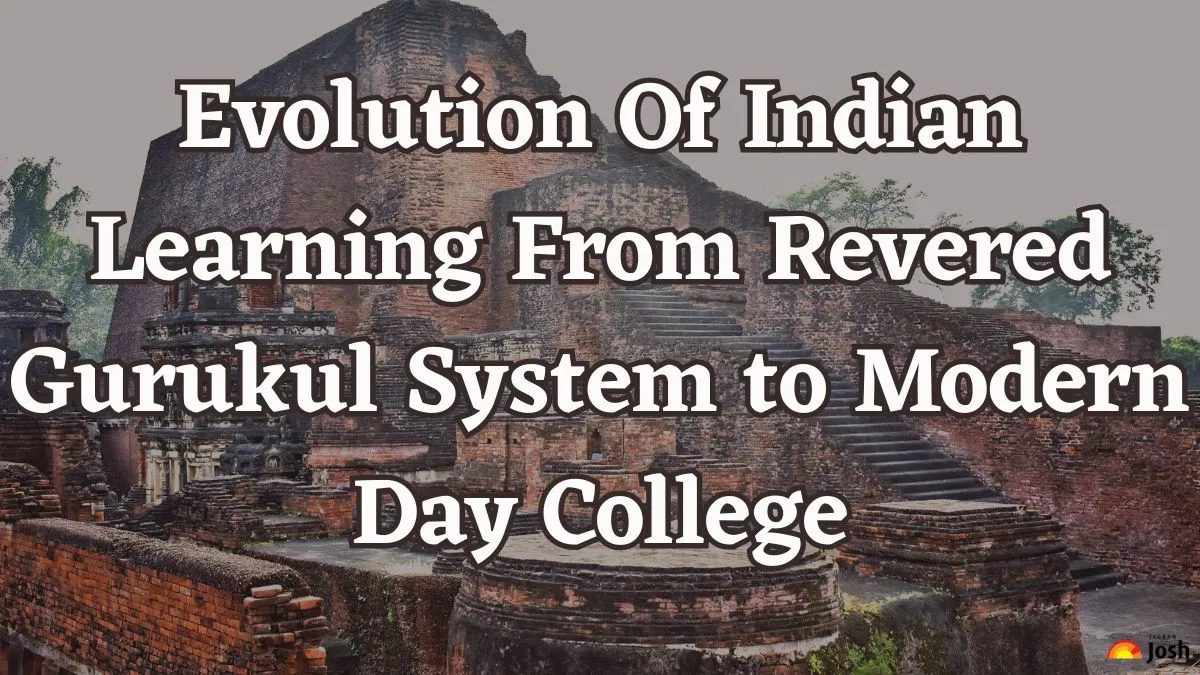Education in India has long been closely tied to culture and values. From the early days of Gurukuls to the current classrooms of colleges and universities, Indian education has seen amazing transformations. This transformation not only represents shifts in teaching methods, but also the progress of society, technology and student demands.
In ancient times, the Gurukul system served as the foundation for education. Students in those days were known as (Shishyas), lived in a basic environment with their teacher (Guru), and the studies not only expanded to scriptures, mathematics and philosophy, but also skills like discipline, responsibility and respect. In the Giurukul system of education, knowledge was passed down orally, and education was viewed as a means of developing character and wisdom, rather than simply acquiring facts.

With the establishment of universities such as Takshashila and Nalanda, India became a global centre of learning. These centres drew students from all over the world, offering systematic education in subjects like medicine, astronomy, medicine, politics, and literature. Then came the Colonial Rule, which introduced a Western-style education. The newly introduced style of education included structured syllabi, examinations and modern disciplines like technology and science. While it moved education away from its traditional foundations, it also allowed for the establishment of contemporary institutions and universities.
From Nalanada and Takshashila to India’s Leading Universities Today
India has long been a place of knowledge seekers and innovative institutions, and it has been known as the Vishwaguru. The world’s earliest colleges and universities, such as Nalanda and Takshashila, drew academic attention from all over Asia centuries before the modern concept of university emerged. These ancient learning institutions were more than just academics; they also promoted philosophy, medicine, astronomy, governance and morality.

At present, India’s modern universities carry on this history of innovation and global significance. From historic universities like Banaras Hindu University (BHU) to world-famous institutions like the Indian Institutes of Technology(IITs) and Indian Institutes of Management (IIMs), Indian colleges and universities provide a delightful blend of heritage and contemporary.
Below is the list of some of the Universities of Ancient India, along with their location and India’s leading University in present:-
| Ancient Indian Universities | Modern-Day Indian Universities |
| Taxila or Takshashila University | |
| Vikramshila University | University of Delhi, Delhi |
| Vallabhi University | Indian Institutes of Technology (IITs)- Pan India |
| Sharada Peeth Temple University | |
| Odantapuri University | Indian Institutes of Management (IIMs) |
| Jagaddala University | |
| Mithila University |
Also, check:-
From Gurukul Learnings to Modern-Day Lecture Rooms
Education in India has always echoed the needs, aspirations and values of the people. During the Gurukul era, students studied disciplines that impacted both their intellect and their character. Vedas, Mathematics, Philosophy, Astronomy, Medicine (Ayurveda), music, and warfare were among the disciplines taught with an emphasis on holistic development and moral foundation.
In the present-day educational system, India’s universities and colleges now offer a wide range of specialised courses, including engineering, artificial intelligence, data science, medicine, law, design, and management. While the locations might have changed from the forest hermitage to smart classrooms, the courses have expanded to meet technological and global needs, the core goal remains the same. Below is a list of some of the ancient courses taught in the Gurukul System and some modern courses taught in the present-day universities and colleges:-
| Gurukul System Courses | Modern-Day Courses |
| Vedas and Upanishads | Engineering and Technology:- Computer Science, Mechanical Engineering, AI, etc |
| Ethics and Dharma Studies | Interdisciplinary Studies:- Data Science, Social Sciences, Cognitive Science |
| Ayurveda | Media and Communication: Journalism, Film Studies |
| Astronomy | Environmental Sciences:- Climate Studies, Sustainability |
| Darshan shastras | Law and Legal Studies:- International Law, Corporate Law, Civil Law |
| Arthashastra (Economics and statecraft) | Space and Aeronautics:- Aerospace Engineering, Aeronautical Engineering, Astrophysics |
| Dhanurveda | Performing Arts |
| Business and Management:- Digital Marketing, Finance, MBA, Human Resources | |
| Vyakarana- Sanskrit Grammar and Liguistics | Humanities |
| Shilpashastra- Art and Architecture, and Craftsmanship | Medical Sciences:- MBBS, Biotechnology, Neurosciences |
The Indian education system combines tradition and innovation. From online learning platforms to global research collaborations, present-day universities are prioritising technology-driven knowledge while simultaneously valuing cultural traditions.
Also, check:-
To stay updated on current trends, join the Jagran Josh Telegram community!
